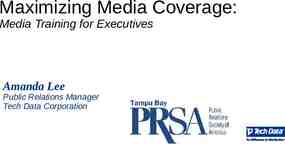Planning Advisory Service Viability Course THE PLANNING SYSTEM AND THE
27 Slides1.07 MB

Planning Advisory Service Viability Course THE PLANNING SYSTEM AND THE DEVELOPMENT PROCESS

The planning system and deliverability Challenges Issues Planners’ responses

THE PLANNING SYSTEM AND DELIVERABILITY

Strategic plan–makers : Deliverability

Strategic planning Should ideally inform the first stages of the plan making process PPS12: Soundness ‘justified’ ‘effective’ ‘flexible’ Justified – What assumptions have been made? These must include assumptions about the market

Effective – Is the plan deliverable, in particular, the infrastructure? Flexible – Can the plan adapt to unexpected changes?

Strategic viability is not about knowing whether every single site is viable – Typical typologies of sites Must understand general viability as set against infrastructure needs – Overlap with requirements of development managers

Tariffs and CIL Community Infrastructure Levy – If you have a CIL you can: Charge for any permissible item Pool contributions Spend contributions on items as and when they are needed

If you don’t have a CIL by April 2014: – You can only have minimal pooling – You will not be able to charge for strategic items The 3 tests – Being rigidly applied by PINS The future for CIL

Development managers : Viability

Development management Understanding the value of a scheme – The developer thinks it is viable, provided that Tough market conditions have exposed the ruthlessness/ingenuity* of developers (* delete as appropriate) At appeal, Government Inspectors starting to be tougher on contributions

CHALLENGES

Multiple challenges Mainstream funding – HCA grant cut Sluggish development industry Increasing on-costs

Increasing policy requirements CSH Level 3 – now – 25% energy efficiency improvement CSH Level 4 – 2013 – 44% energy efficiency improvement CSH Level 6 – 2016 – zero carbon

Landscape Expert advisers External consultees and stakeholders Planners Internal consultees Planning Committee Members

Experts : some questions Who are they? Where are they? What do they know about planning?!

Planners : context issues The need to understand the development process: – House builders – Developers – Investors

Planners : technical issues The stuff of development: – Rents, yields – Costs – Finance Appraisal techniques Toolkits

Internal consultees Who are they? How do they engage? What is their understanding of planning (and the effect of what they ask for)? How is their advice processed?

External consultees Who are they? Are they aware of their impact on viability? Are they accountable to anyone? How are their competing demands reconciled?

ISSUES

So how does all this square with the issues you raised earlier?

PLANNERS’ RESPONSES

Key things to understand The process An appreciation of the key variables How to manage the process How to secure the right advice

What planners need to be armed with An understanding of the development process – The motivations for developing property – The commercial issues considered and criteria used to assess development projects An appreciation of key variables – The impact of finance and various funding models

How to manage the process – The effect and limitations of planning within the context of the development process – The implications for the viability of development associated with interventions made through the planning system How to secure the right advice – Commissioning and procurement

Possible approaches 1. Open book assessment and negotiation 2. Reviewing viability in stages – Clay Farm, Cambridge 3. Processes for resolving differences






